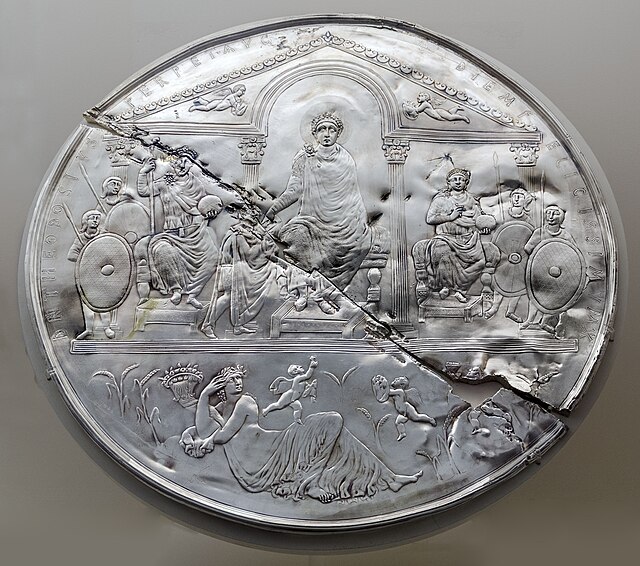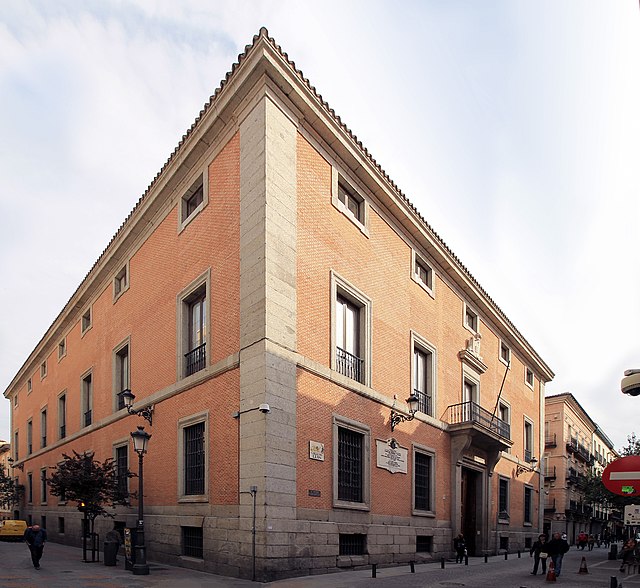Missorium of Theodosius I
The Missorium of Theodosius I is a large ceremonial silver dish preserved in the Real Academia de la Historia, in Madrid, Spain. It was probably made in Constantinople for the tenth anniversary (decennalia) in 388 AD of the reign of the Emperor Theodosius I, the last Emperor to rule both the Eastern and Western Empires. It is one of the best surviving examples of Late Antique Imperial imagery and one of the finest examples of late Roman goldsmith work. It is the largest and most elaborate, and the most famous, of the 19 surviving vessels believed to represent largitio ("largesse") or a "ceremonial gift given by the emperor to a civil or military official".
A copy of the Missorium of Theodosius in the Museum of Mérida, Spain. The original was found in Almendralejo in 1847.
The peristyle in Diocletian's Palace, in modern-day Croatia.
The Missorium of Kerch representing Constantius II, Hermitage Museum, St Petersburg.
A copy of the Missorium of Theodosius in the Museum of Mérida, Spain.
Real Academia de la Historia
The Real Academia de la Historia is a Spanish institution in Madrid that studies history "ancient and modern, political, civil, ecclesiastical, military, scientific, of letters and arts, that is to say, the different branches of life, of civilisation, and of the culture of the Spanish people". Spanish people in this regard are understood to be citizens of the Kingdom of Spain or the indigenous people of its predecessors, or their descendants. The academy was established by royal decree of Philip V of Spain on 18 April 1738.
Real Academia de la Historia





